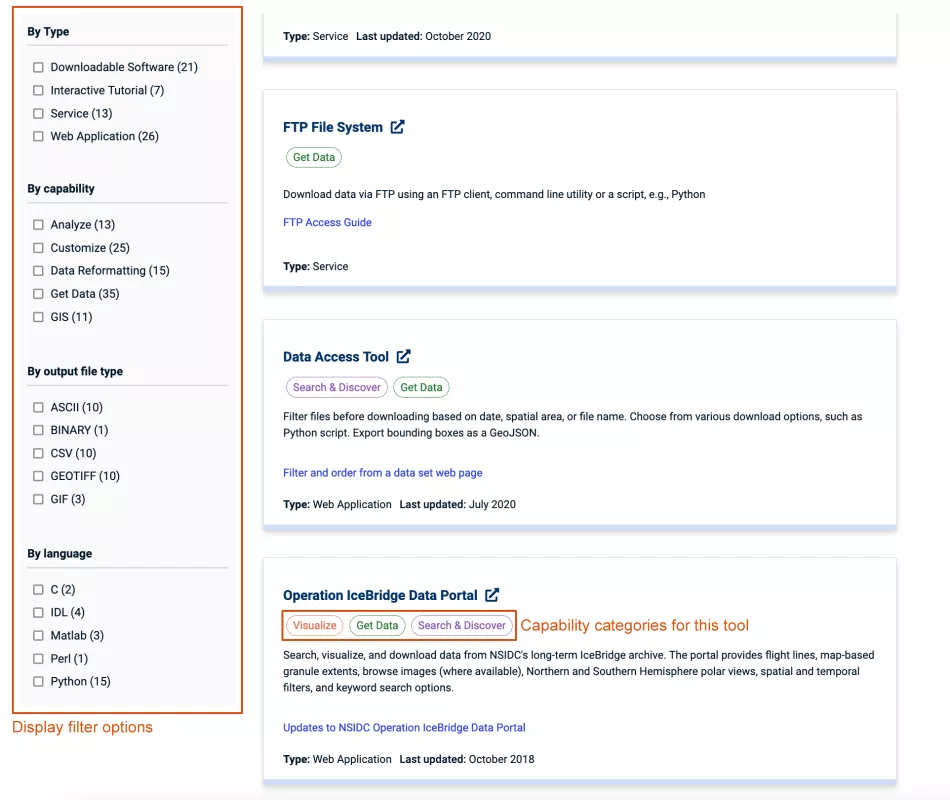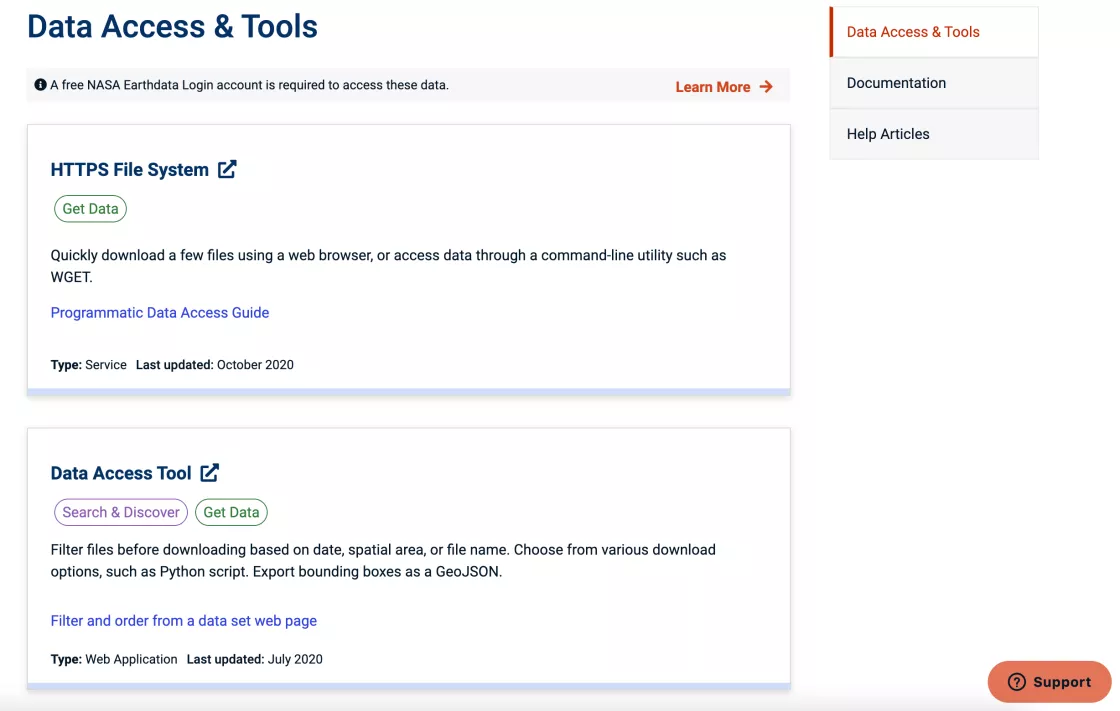By Michon Scott
“Great, I think I found the data product I need! Now what do I do?”
If you have ever wondered this, or otherwise felt unsure of what to do next when finding, downloading, or working with a data product distributed by NSIDC, then our user resources are for you.
NSIDC distributes more than a thousand data products, many of them as complex as they are powerful. Working with data products often entails mastering third-party software, understanding data structure or format, and even working with multiple, disparate products for a single analysis. To help new users up the data-use learning curve, NSIDC has developed a growing suite of help articles, primers, and data tools.
User resources provided by NSIDC
For the newest of users, NSIDC offers a guide to getting started with NSIDC data. For both new and more experienced users, our extensive Help Center includes dozens of frequently asked questions and step-by-step guidance for common tasks. Help articles can be filtered by type of guidance offered, topic, and data collection.
NSIDC also offers tools that fall into categories aligned with the steps users often take in finding and using data:
- Search and discovery
- Data access
- Visualization
- Geographic Information Systems (GIS)
- Analysis
- Reformatting
- Reprojection
- Subsetting (spatially, temporally, by variable
Available tools include web applications, Application Programming Interfaces (APIs), and interactive Jupyter Notebooks that combine textual guidance and blocks of code to help users access and work with data products. (For an example, see the Jupyter Notebook portion of the Explore, Discover, and Access Snow and Ice Data with the New NASA NSIDC DAAC Website video.)
How to find our tools
NSIDC provides multiple routes to our data tools.
NSIDC’s Data Tools catalogue provides the main portal to the tools NSIDC offers—roughly 60 different offerings—and the page’s display can be filtered by the tool type, capability, output file type, and coding language. Each tool displayed shows its capability categories, allowing users to search by data-use function.
In addition, every data collection and data product listed on the NSIDC site displays applicable tools, help articles, and product documentation in the sidebar (when viewed on desktop) or dropdown menu (when viewed on mobile). Data products can be accessed through NSIDC’s Explore Data page and through NSIDC’s Search feature.
Finally, users can locate resources through NSIDC’s GitHub repository, including data tutorials.
Suggestions welcome
These extensive tools, tutorials, and help guides are the result of a years-long effort to enhance resources and their discoverability, utilizing NSIDC expertise in research, user services, software development, and user interface design. This is an ongoing effort, and its success depends largely on feedback from our users. If you have ideas for new use cases to address through tutorials or help guides for working with NSIDC data, please contact the NSIDC User Services Office.
Access data through the NSIDC DAAC
NASA’s NSIDC DAAC manages, distributes, and supports a variety of cryospheric and climate-related datasets as one of the discipline-specific Earth Science Data and Information System (ESDIS) data centers within NASA’s Earth Science Data Systems (ESDS) Program. User Resources include data documentation, help articles, data tools, training, and on-demand user support. Learn more about NSIDC DAAC services.
Access data through NOAA@NSIDC
NSIDC archives a variety of data sets on behalf of NOAA. In addition to archiving data, the NOAA@NSIDC provides data users with multiple methods of support: documentation, help articles, data tools, training, and on-demand support.

